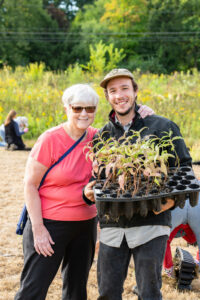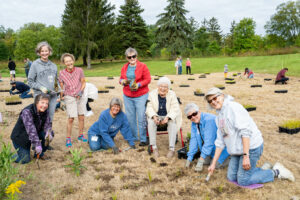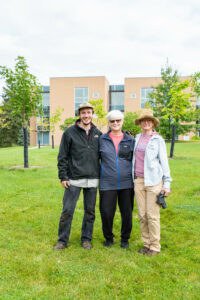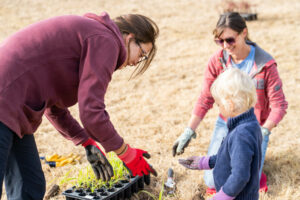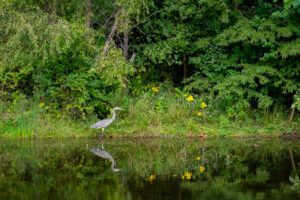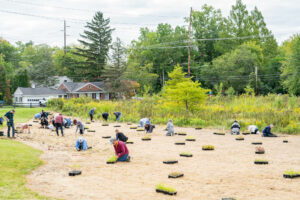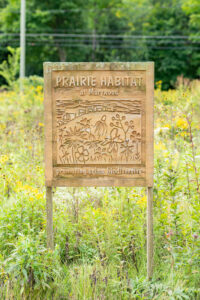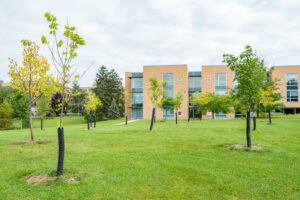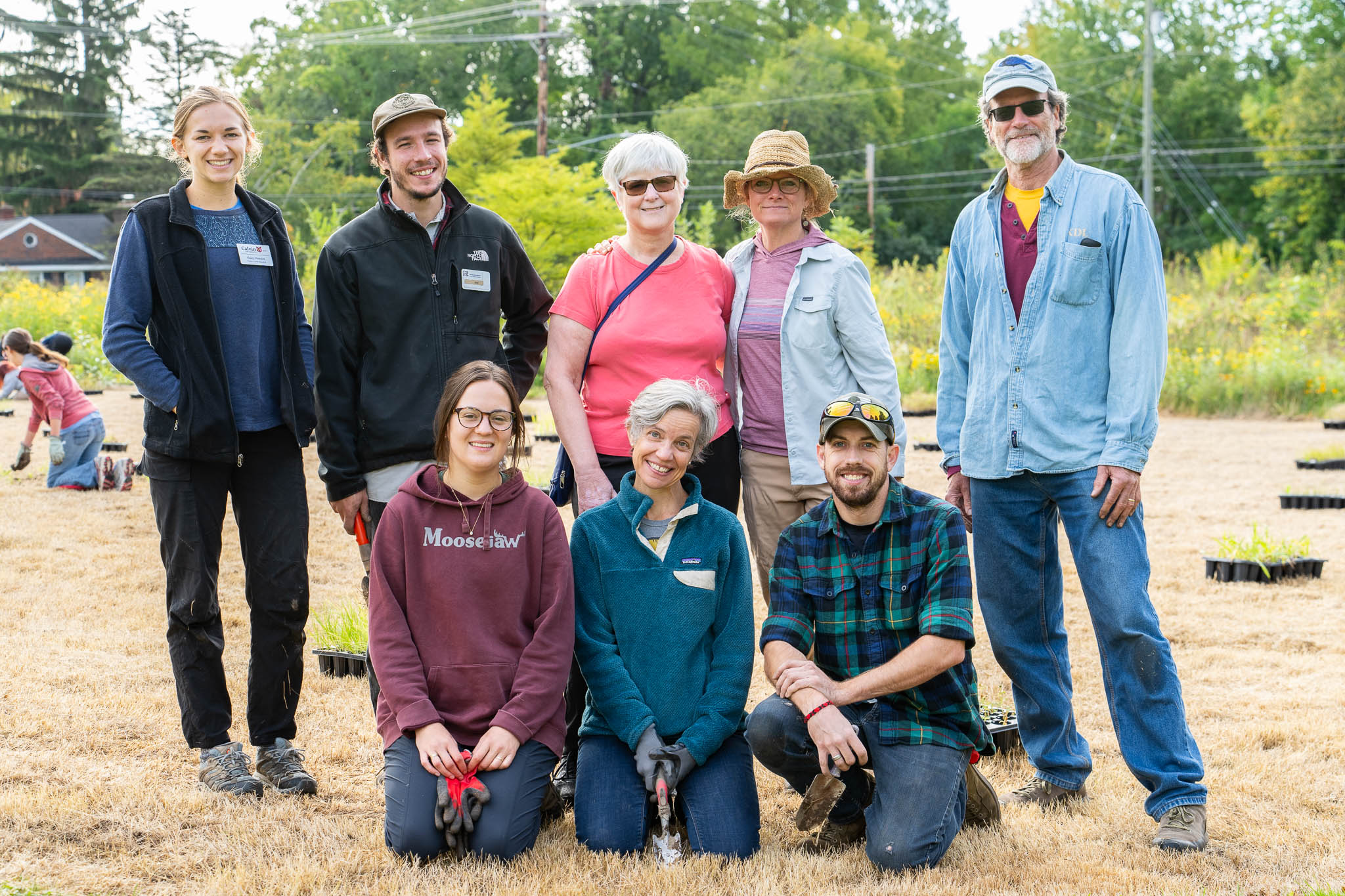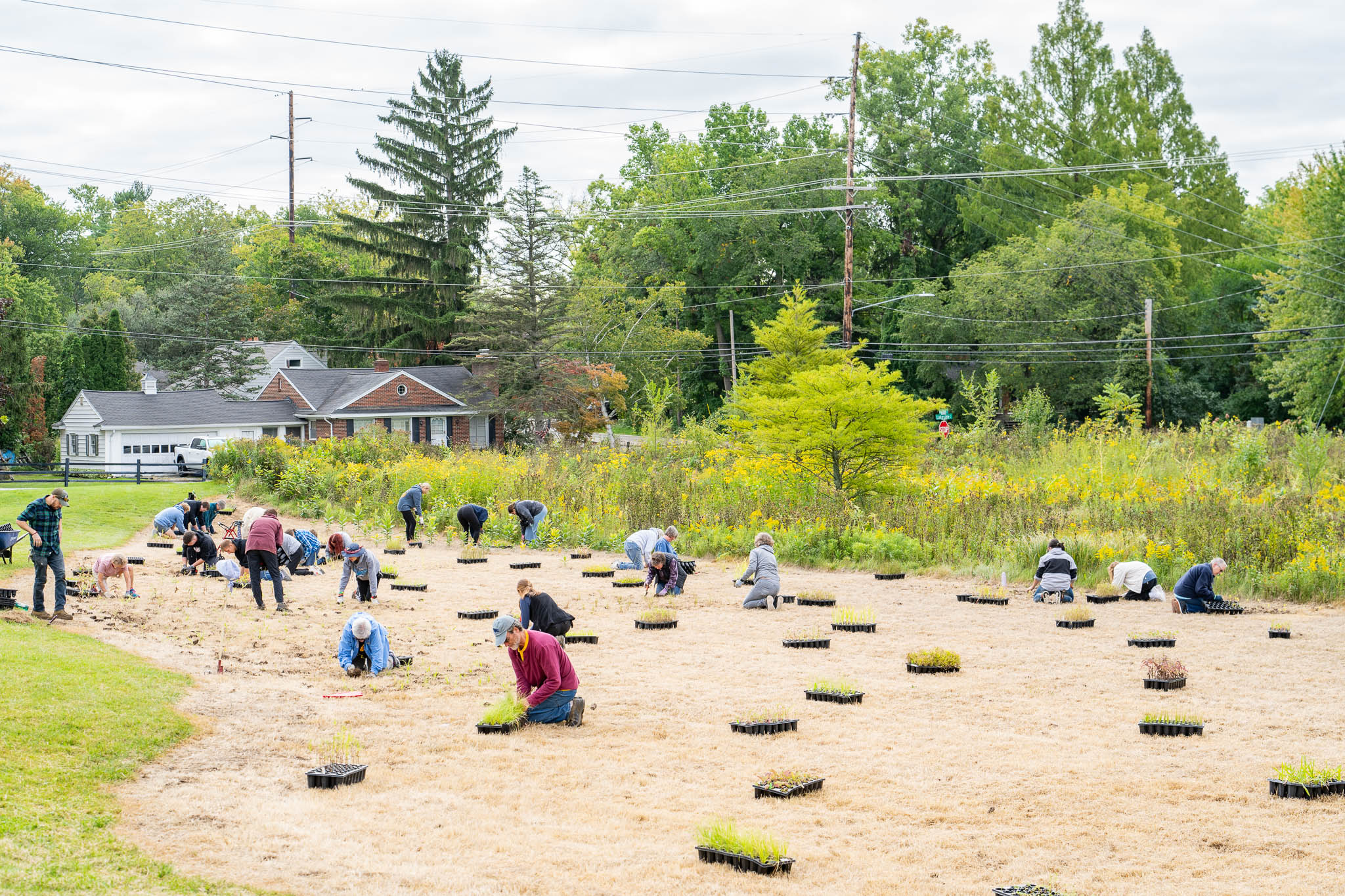
by Kathi Sleziak OP
“Our 34-acre Marywood Campus has the potential to transform some of its spacious lawns into beautiful woods or a tiny forest. Trees are critical to the overall quality of our environment. They offset development impacts, significantly diminish noise pollution, lower air temperature, remove pollutants from the air, and decrease topsoil erosion. Trees are a critical component of numerous ecosystems and provide habitats for songbirds, small forest animals, wildflowers, and smaller understory trees.” ~ Kathi Sleziak OP
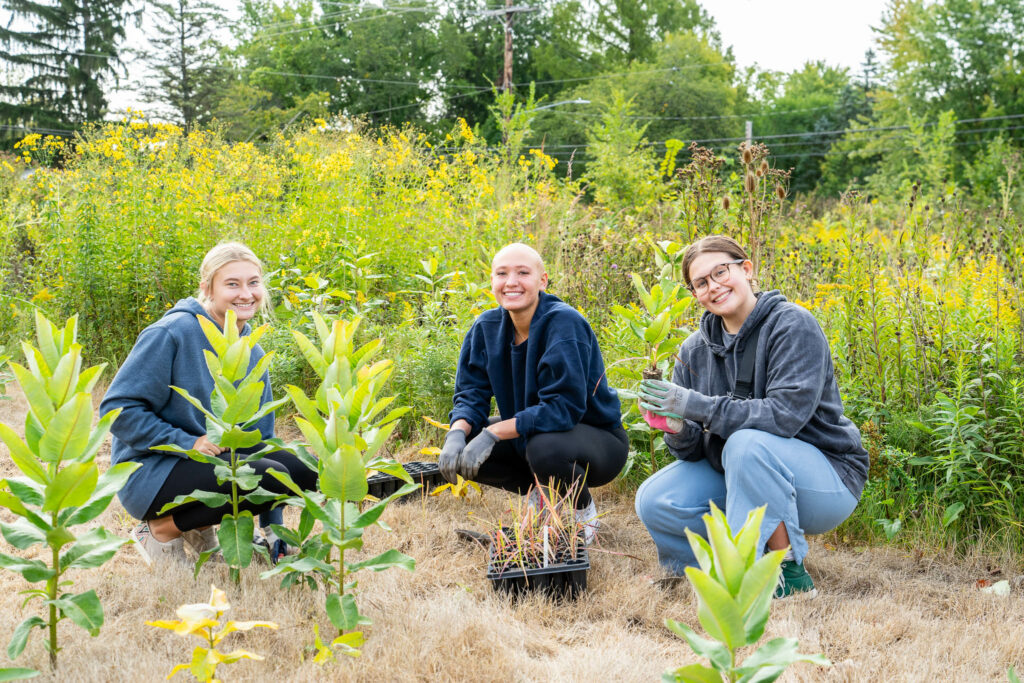 On an early September morning, the teachers, the gardeners, and the curious came with trowels in hand to plant native grasses, sedges, and wildflowers, expanding the Prairie Habitat at Marywood.
On an early September morning, the teachers, the gardeners, and the curious came with trowels in hand to plant native grasses, sedges, and wildflowers, expanding the Prairie Habitat at Marywood.
These hardy volunteers included Aquinas College Professor Amy Dunham Strand and her class of young environmentalists, ecology-committed Sisters and Associates, Coldbrook Creek Watershed members, neighbors, and Wild Ones River City.
Coldbrook Creek originates at West, Mid, and Church Lakes, and from there flows through the Floodplain Forest at Marywood, is buried underground in concrete culverts, gets ‘daylighted’ back to the surface as a visible creek just before leading into the Grand River in downtown Grand Rapids.
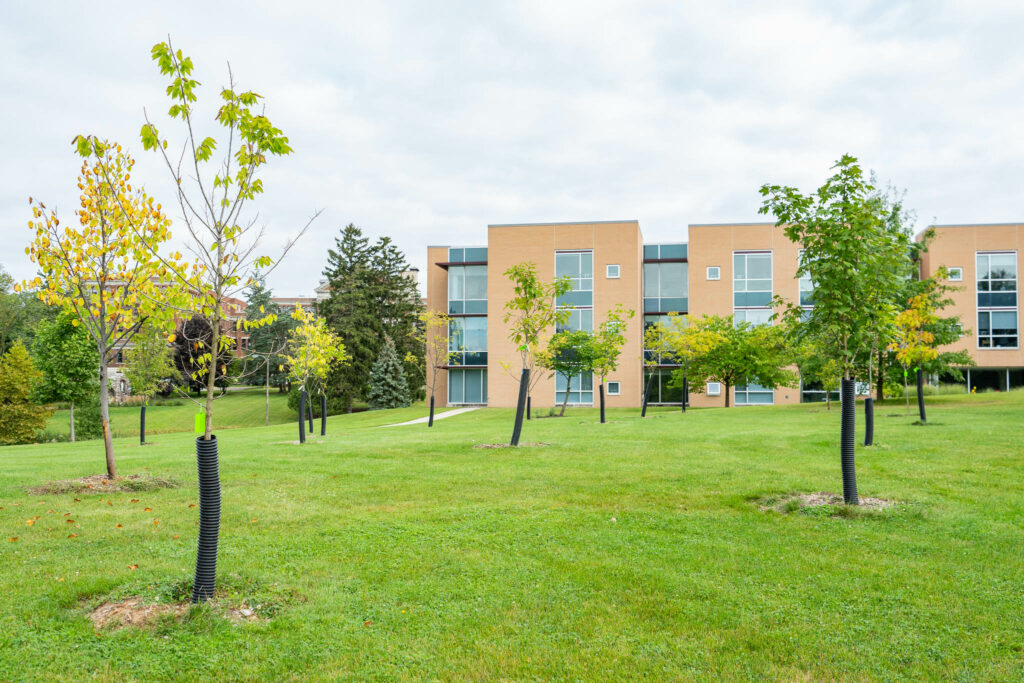 Last fall a group of volunteer urban foresters, guided by Friends of Grand Rapids Parks, planted 22 trees on the front lawn. Each native tree was given its own special spot and planted to one day contribute to a ‘mini forest’. With help from the Plaster Creek Stewards, this past spring, the Dominican Sisters were gifted with another 20 trees.
Last fall a group of volunteer urban foresters, guided by Friends of Grand Rapids Parks, planted 22 trees on the front lawn. Each native tree was given its own special spot and planted to one day contribute to a ‘mini forest’. With help from the Plaster Creek Stewards, this past spring, the Dominican Sisters were gifted with another 20 trees.
We are expanding the Prairie footprint by planting native plants and grasses to act as a buffer designed to filter sediment and pollutants found in the stormwater runoff that flows from our parking lot. This large scale “green infrastructure” practice helps improve water quality of both Coldbrook Creek and the Grand River which flows into Lake Michigan.
“Reducing lawns is more cost-effective and sustainable,” says Ian Todd, Grounds Team Leader for the Dominican Sisters Grand Rapids. “Last year we collected and hauled away 40 tons of leaves. We are planning to retain those leaves and compost them for use on campus. As the new forest matures, fewer leaves will be collected and instead will be left to naturally decay and nourish the plant and animal life on the Marywood campus.”
Rebecca Marquardt, landscape architect and member of Wild Ones River City, is creating a Marywood campus landscape master plan which will be a mechanism to study and guide development of our 34-acre campus. It will be a tool to engage, problem solve, and inspire. Rebecca is the owner of ‘Revery’, a landscape architecture studio which specializes in native and restorative ecology.
“The Dominican Sisters are in a good position for modeling what strong and solid ecological landscaping might look like in urban and neighborhood setting,” said Rebecca. “This is an opportunity to do something most area homeowners are not able to do: return some of the regional character that the landscape of this unique place once had.”
“Prairies, or more accurately, Oak Savannas, were historically found throughout southern Michigan. Now, more than 99% of these natural communities are gone or “extirpated” due to development,” said Rebecca. The majority of the Marywood campus was likely more of an Oak Hickory Forest, which would have shifted into Oak Savanna with populations of grasses and wildflowers, depending on indigenous occupancy and practices of using fire to manage vegetation.”
The Prairie Habitat at Marywood, an eco-justice initiative of the Dominican Sisters, was established nearly 20 years ago. Sister Lucille Janowiak OP and teams of dedicated volunteers from the community, including Wild Ones River City, cared for the prairie by planting native and removing invasive species. “A prairie habitat in an urban setting is a rare but valuable resource that provides a key habitat for many species of wildlife, serving as important breeding, feeding, nesting, and brood-rearing centers,” explains Rebecca.
Prairie habitat efforts include:
- Enhancing ecological function through lawn reduction
- Planting high carbon-dioxide storing low-maintenance native grasses, plants and wildflowers
- Reforesting with native trees
- Improving trails, pathways and gathering spaces for contemplation and education
Collaboration is Key
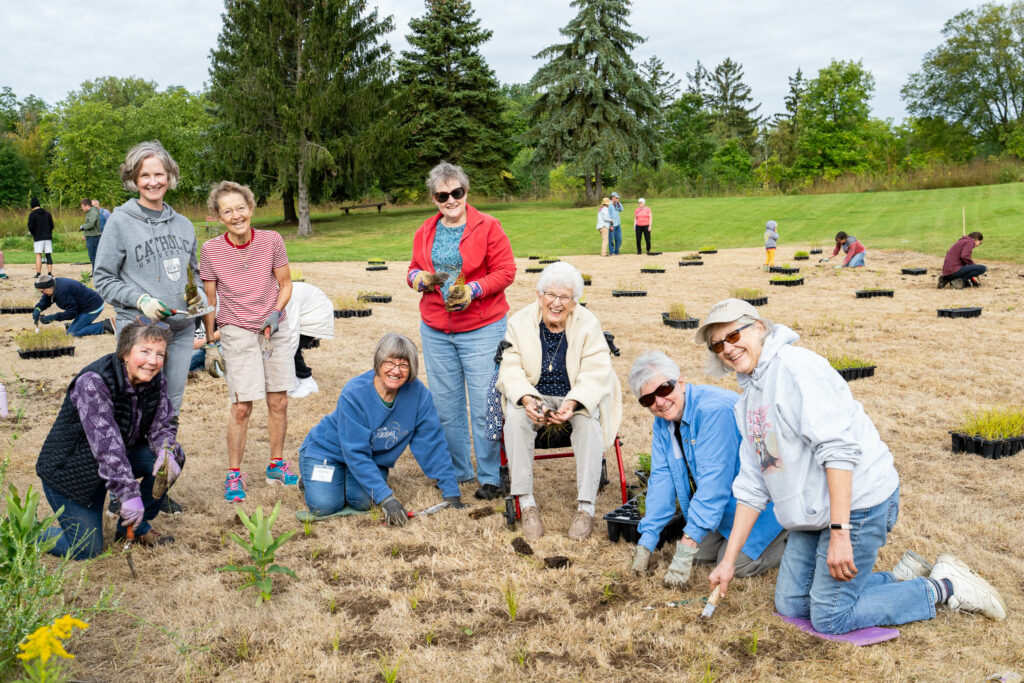
Just as Sisters and Associates are studying Care of Creation, improving the Prairie, trails, pathways and gathering spaces for contemplation and education will serve as foundational experiences for many in the community, including Aquinas College and Whistlestop Child Care students.
One of the gifts of this project has been the networking and support of the environmental community. We learn, share, and volunteer with each other’s projects. We advocate for and promote each other’s programs. Because of these relationships, our Congregation was gifted trees; urged to apply for the National Wildlife Foundation’s Sacred Ground grant (which we received); and encouraged to apply for a Wildflower Association of Michigan grant.
The timing and collaborative approach is particularly enriching because it aligns with the Dominican Sisters’ conviction of our responsibility to care for God’s Creation.
“Sisters, Associates, and employees have been collaborating through contemplative study and ongoing pursuit of seven interlocking Laudato Si’ goals. The goals focus on such areas as responsible stewardship and the adoption of simple, sustainable lifestyles. We believe these can be instrumental in bringing about a better world for all,” said Prioress Sister Sandra Delgado OP.
Celebrating God’s Creation
“How amazing this place we call home is. We want to continue improving trails, pathways, and gathering spaces for the purpose of contemplation and education,” said Sister Sandra.
In September we gathered in Chapel of the Word and in the Saint Francis Sculpture Garden on the banks of Coldbrook Creek for a prayer service. We prayed: Let Justice and Peace Flow from the waters of baptism into our hearts and out through our actions. Send us forth with a common purpose in this Season of Creation.
May our Community efforts, our Camaraderie as we work together caring for Mother Earth, find us walking gently on this holy ground, treating all our kin with reverence and as pure gifts from you, our Gracious God.
Our Dominican Sisters and Associates will continue to join our voices, actions, and prayerful intentions in calling for justice not only for human beings, but for all creation. We are called to protect creation, to change our attitudes, and to share our sacred spaces with all who are open to study, prayer, community, and service.
Gallery
